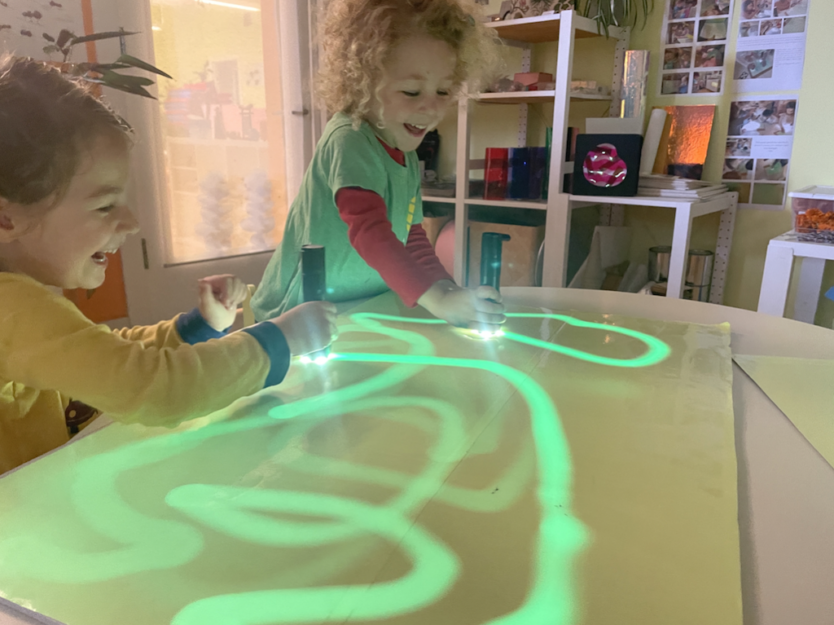The greatest benefit of the ateliers for La Scuola International School students is that it provides them ample space to develop their ideas and become confident in tackling the unknown.
A special place in every Reggio school is the atelier. The atelier is a laboratory of sorts; a place full of a variety of materials, mediums, and tools that allow students to further their inquiries, explore new ideas, and express themselves.
Take an explorative journey today through this blog post, written by our Preschool Atelierista, Federica Gallone, as she shares the students’ discovery into the “Stories of Light” / “Storie di Luce.”
Natural Light
Water reflects, refracts and diffuses light and in doing so creates a lively and fascinating luminosity. And when the water refracts the light, the rays pierce the surface, creating that unique underwater effect.

Before returning to their classroom, some children accidentally bumped into a wooden trolley with a jug of water on it. The reflection of the water immediately begins to move . . .
Zara: she’s dancing!
The phenomenon immediately arouses curiosity in all the children who, curious and enchanted by the fascinating phenomenon, observe this dance and try to understand its magic.
Artificial Light
In a subsequent experience I offer the children some silver paper and some flexible lights on the floor to try to artificially recreate the same effect. Niko immediately agrees on the magic . . .
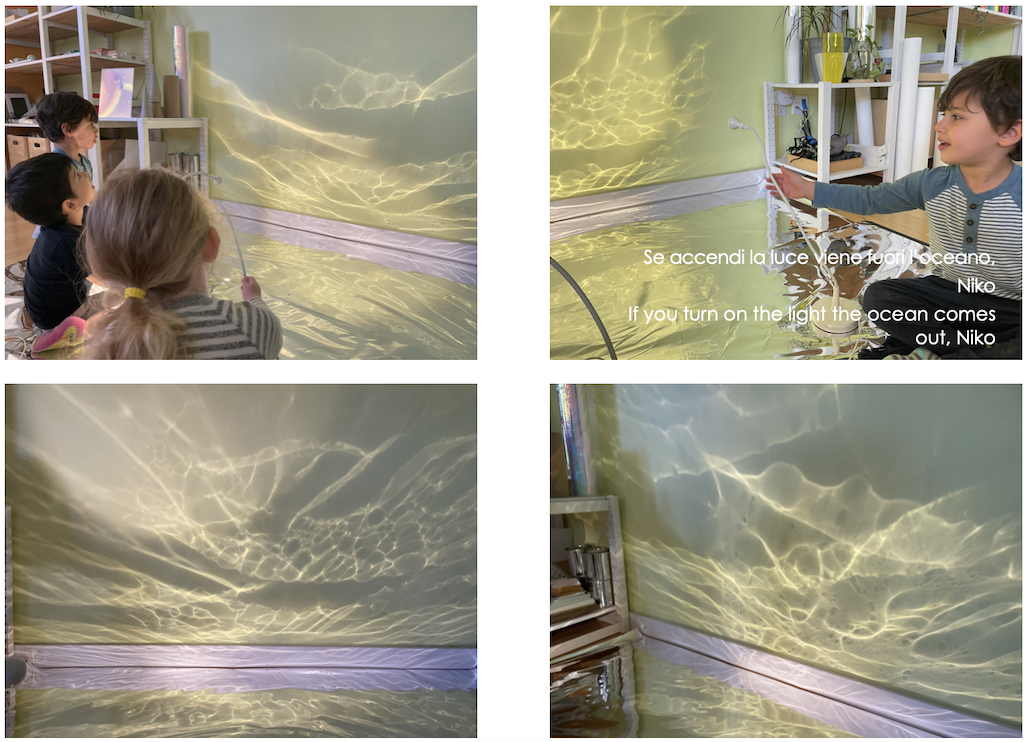
The Projector
The light projector is another game and discovery tool present in the atelier. Its ability to be moved allows you to create different projection beams on the wall that are more or less wide.
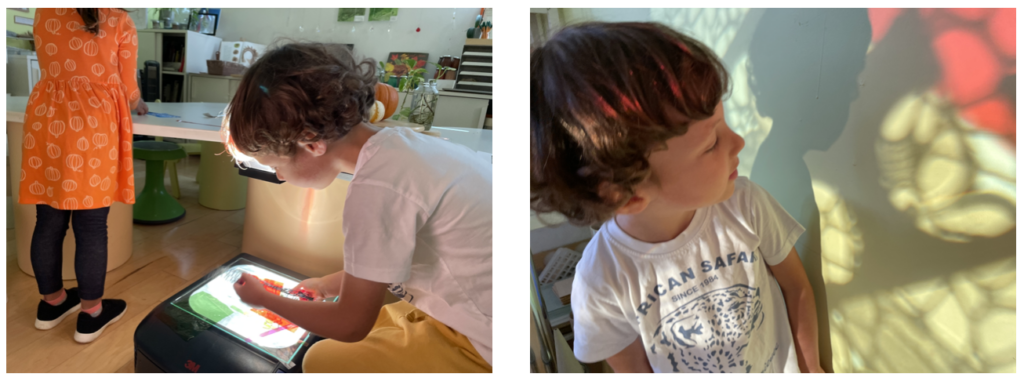
What scenarios will the children have created?
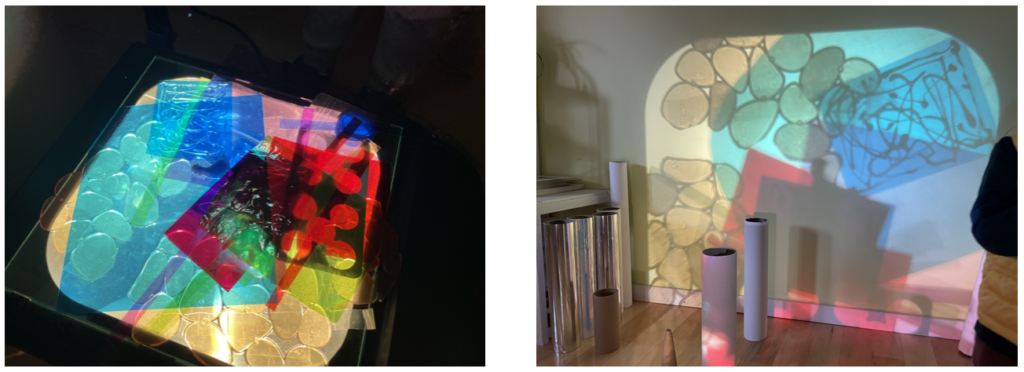
As skilled directors, lighting directors and artists brought complex and immersive scenarios to life using different filters and papers.
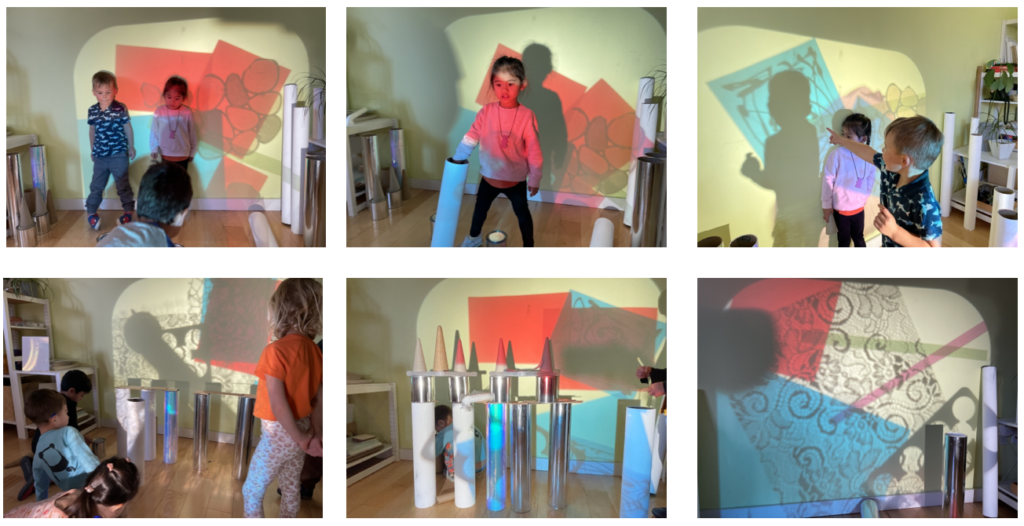
Holographic Papers
Holographic papers are made in the same way as metal foils, inside they contain a relief pattern that diffracts the light and shows the colors of the spectrum at different angles. Despite their dual nature, they manage to give a three-dimensional optical illusion.
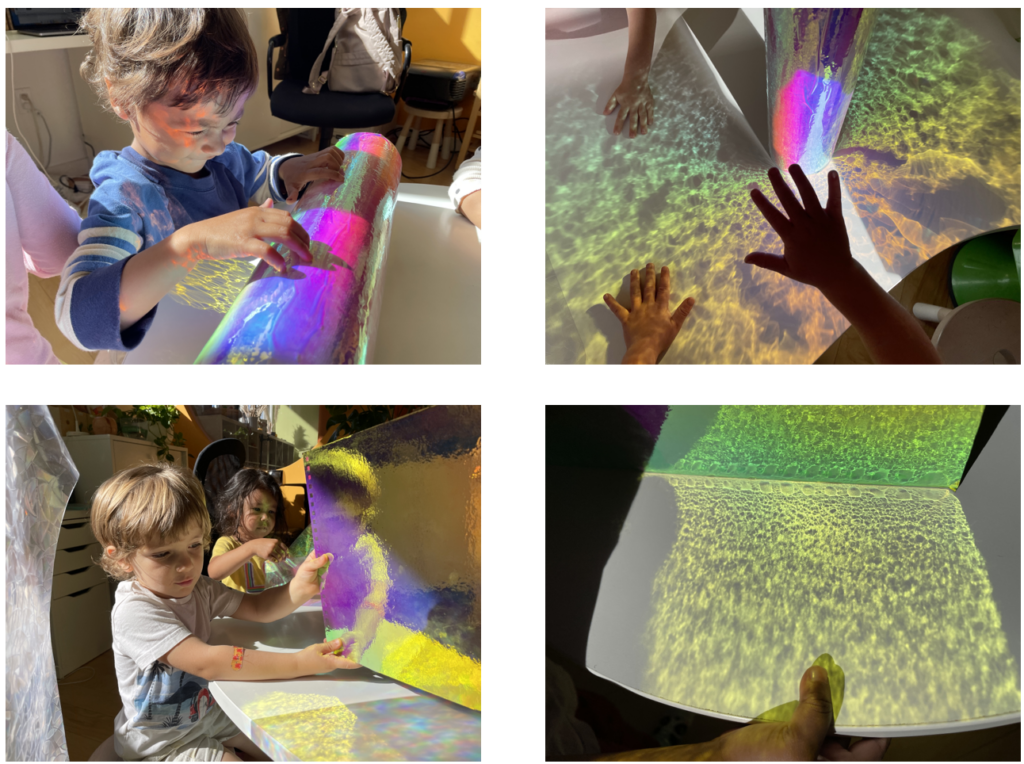
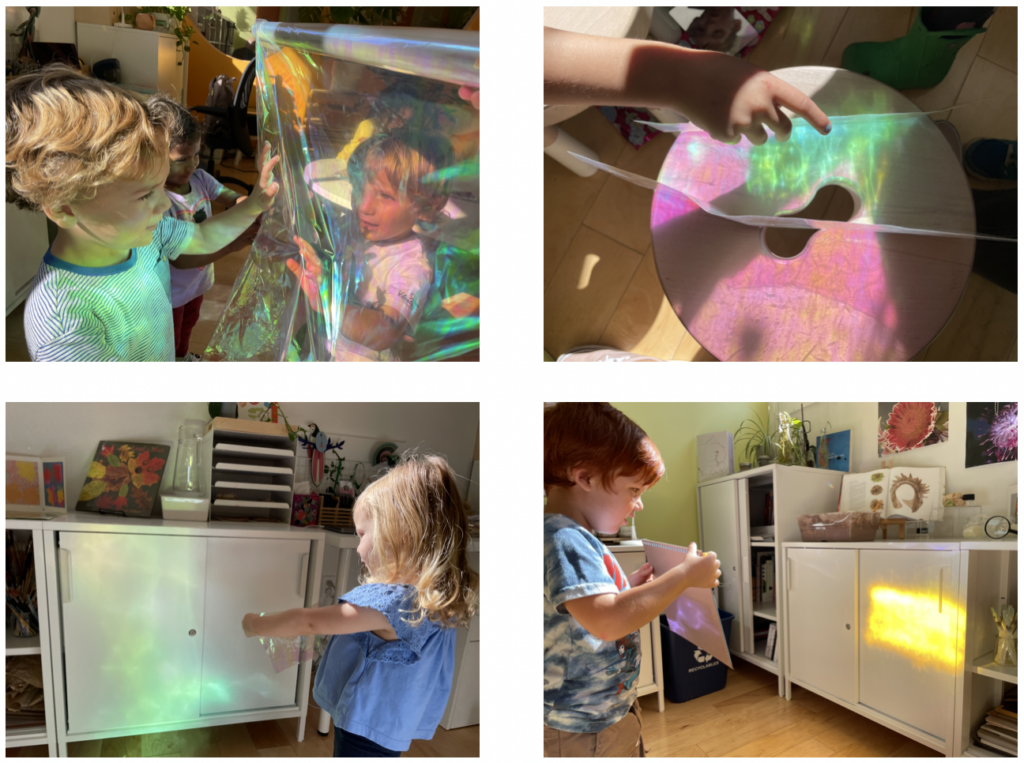
Leonardo is Electricity
As soon as he entered the atelier, Leonardo began playing with a suspended wire full of small mirrors. After an initial interaction that was more observational, Leonardo began to move the wire so quickly that the reflections from the mirrors began to draw beams of light on all the walls of the room.

Leonardo: Look on the wall, look on the wall? Do you see the electricity?
Federica: Leo, is that electricity on the wall?
Leonardo: Yes.
Federica: Leo, do you have to move fast to make electricity?
Leonardo: Yes.
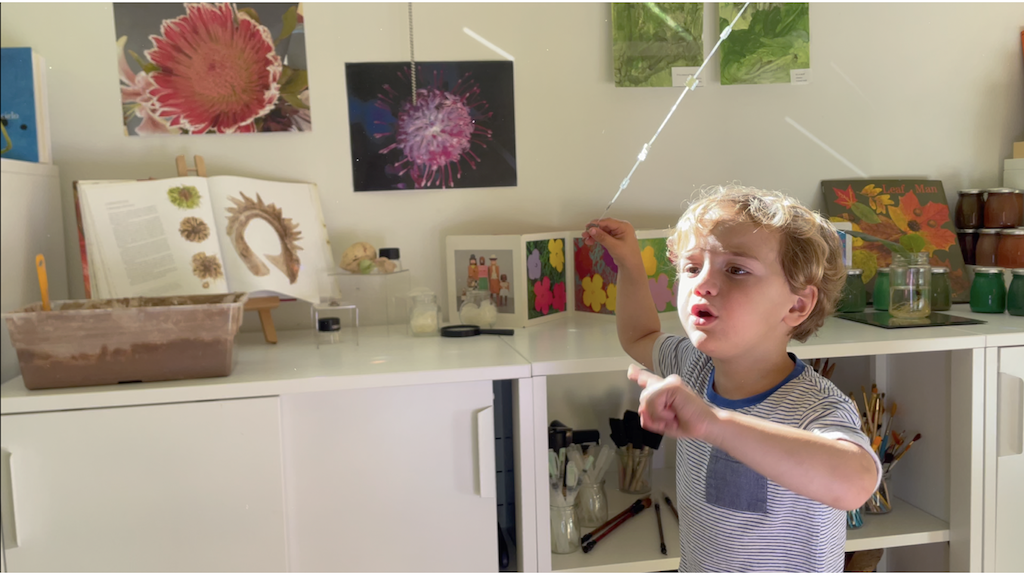
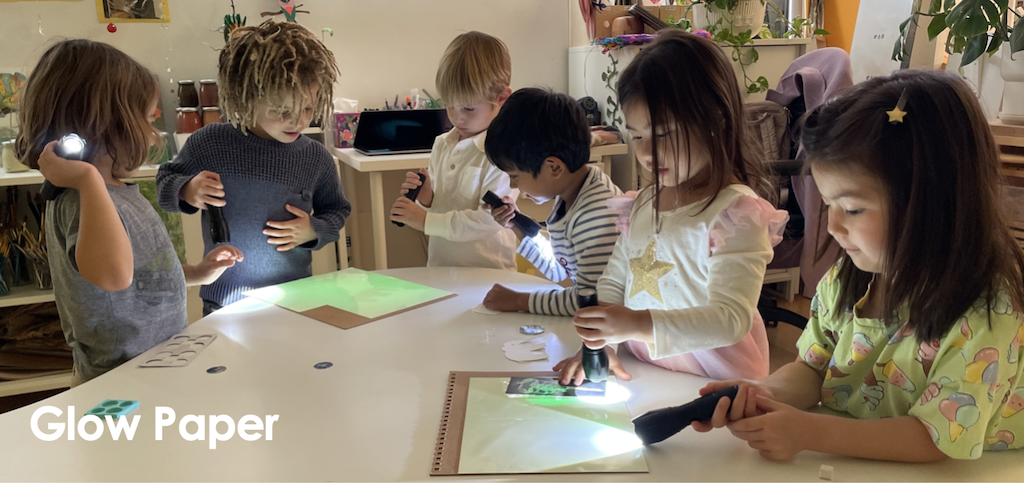
The glow paper is a phosphorescent paper made of high quality vinyl, inside it contains a layer of zinc sulphide or glow powder, this makes it magical when the light goes out and torches come into contact with it.
How can a card glow in the dark?
The thin layer of zinc sulphide or glow powder are energized by light and that is why they emit a bright green glow.
What curiosities and amazement will have arisen in the children?
Once we enter the atelier, I ask the children if they know this card that is on the table. They tell me no, they look at it and I tell myself it’s just smooth paper. So I invite them to place a hand on it, I turn on a torch keeping it away from the subject and I ask them to count together to ten . . .

. . . They amazed and amused children realize that the paper has “captured the shadow” of their hand.
Another group of children, always with the same technique, uses some materials that I have made available to them. The play of illuminated and black spaces becomes more and more interesting.
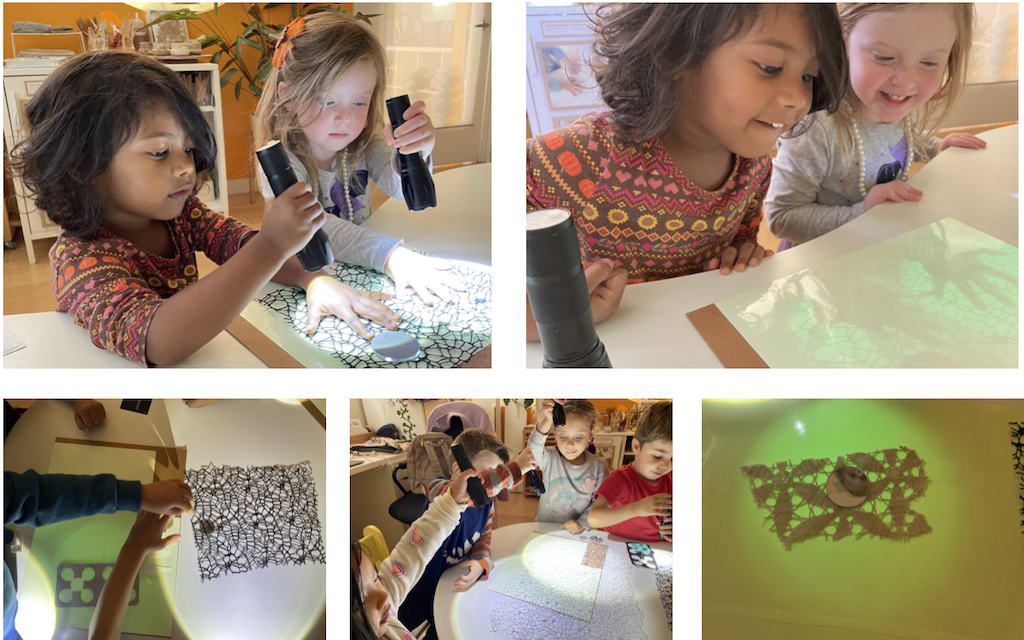

. . . Look Federica! I made a copy! Luca
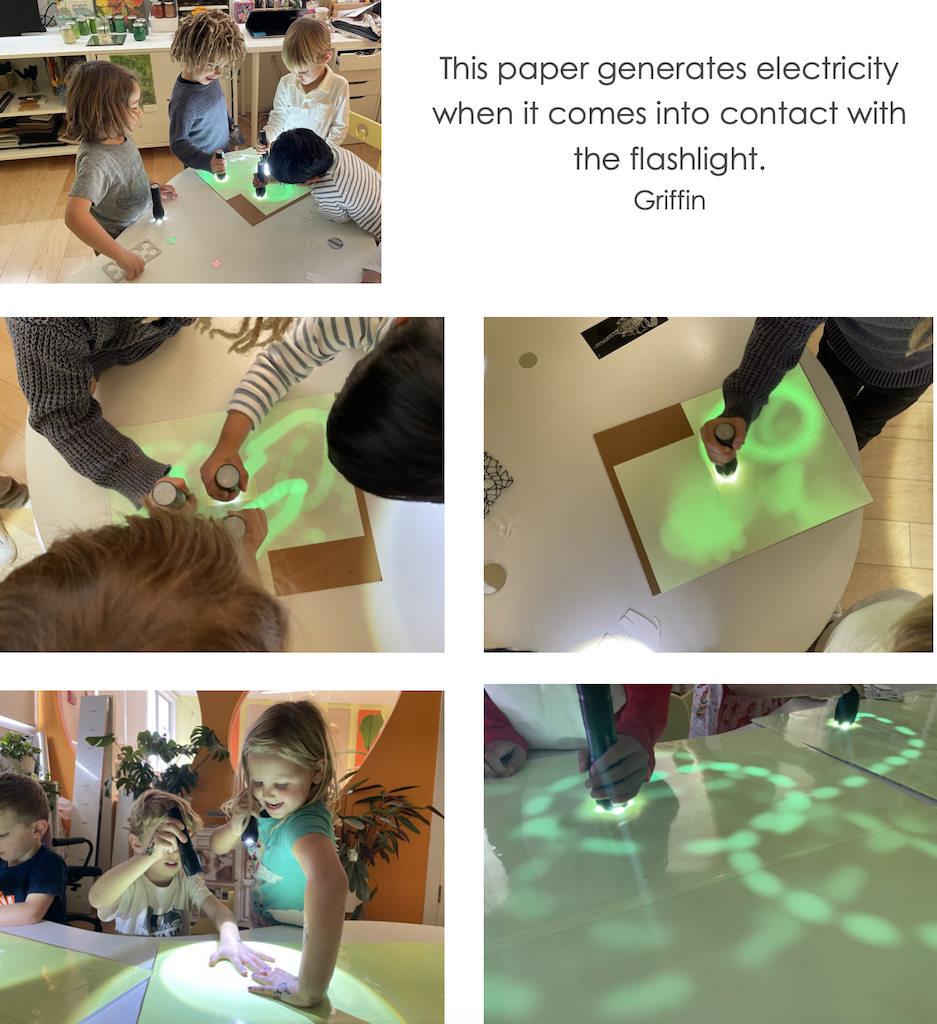
Light Designs
We have seen that by pointing the light upwards and waiting a few seconds it is possible to obtain silhouettes, what happens instead if we bring the flashlight closer to the sheet of paper?
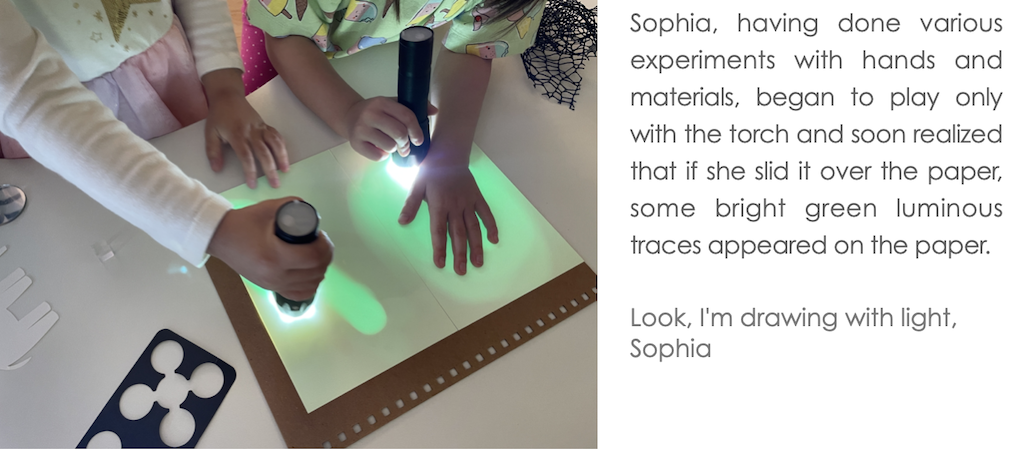
The children realize that if they drag the torch across the paper without detaching it, it is possible to draw with light.
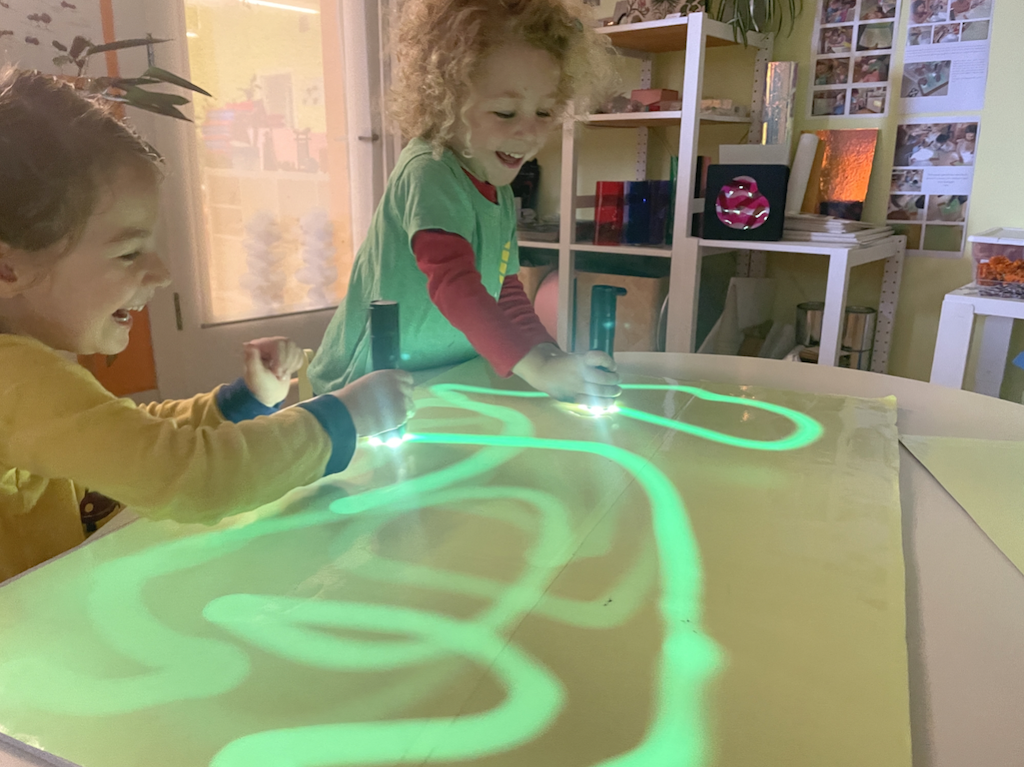
Children’s scientific and poetic aesthetic interpretations
The examples below show us how children can interpret and make their knowledge visible through the use of materials that are not usually designed for play.
Calder and Zayn assemble two old music CDs together with two prisms and create two planets named Saturn.

Leo, Misa and Brooks while playing with torches illuminating the entire atelier, realize that by projecting the light on the curtain that obscures one of the two doors, depending on the distance you put yourself, you can see the moon or the stars.
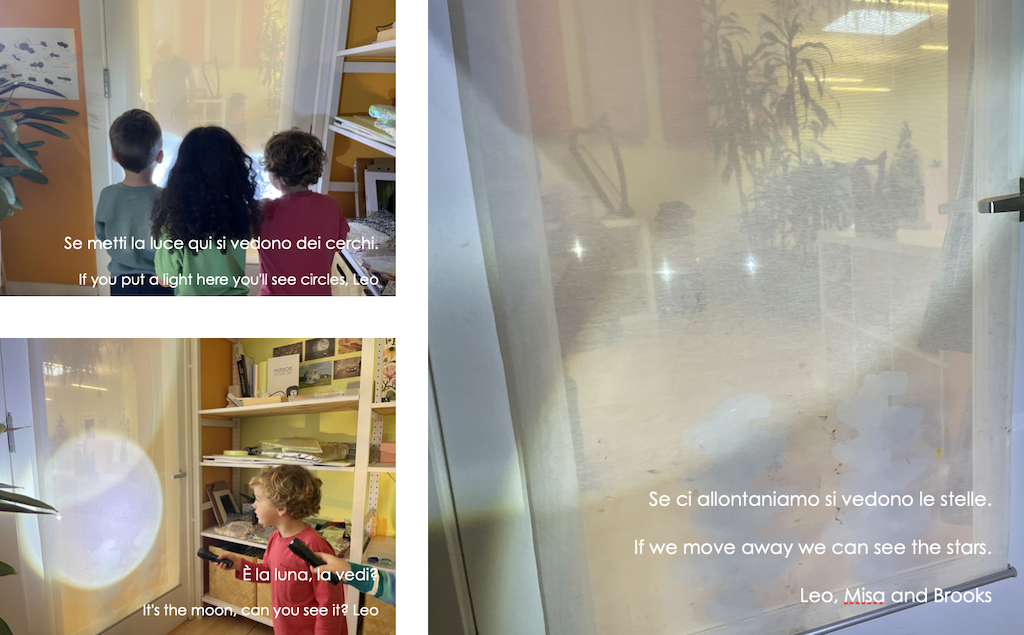
Written by Federica Gallone,
Atelierista for the San Francisco Preschool and Mission Campuses
Share this Post

